Hyperliquid: Derivative DEX platform integrating Perp DEX and Layer 1
Hyperliquid is a derivatives trading DEX that allows users to execute long/short orders on a variety of assets with a maximum leverage of x50. What makes Hyperliquid different is that the platform operates on Hyperliquid L1, a Layer 1 blockchain developed by the project team itself, optimizing trading speed and experience.
INSIGHTS
3/11/20256 min read
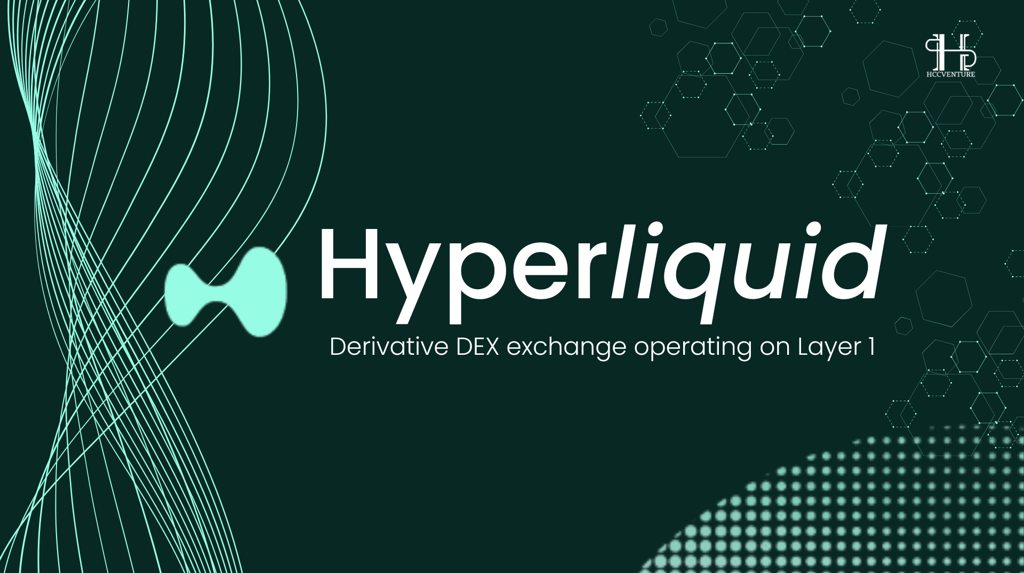

What is Hyperliquid? Why is Hyperliquid noteworthy?
Hyperliquid is an advanced Layer 1 (L1) blockchain platform designed to provide a high-performance, low-cost, and transparent decentralized finance (DeFi) environment. Hyperliquid's unique feature is its on-chain perpetual futures exchange, which enables users to trade leverage without intermediaries.
Highlights compared to other DeFi platforms:
Independent L1 Blockchain : Not dependent on Ethereum or Solana, helping to increase processing speed and reduce transaction fees.
HyperBFT Consensus Mechanism : Near-instant transaction confirmation (~0.2 seconds), secure and decentralized.
No gas fees : Users do not have to pay gas fees when transacting, which significantly reduces costs compared to Ethereum.
HyperEVM – Dedicated Ethereum Virtual Machine (EVM) : Supports Ethereum-compatible smart contract deployment, allowing developers to easily build DApps on Hyperliquid.
HyperEVM – Dedicated Ethereum Virtual Machine (EVM) : Supports Ethereum-compatible smart contract deployment, allowing developers to easily build DApps on Hyperliquid.
No venture capital (VC) funds : The project is self-funded and focuses on decentralization, avoiding control by large investors.
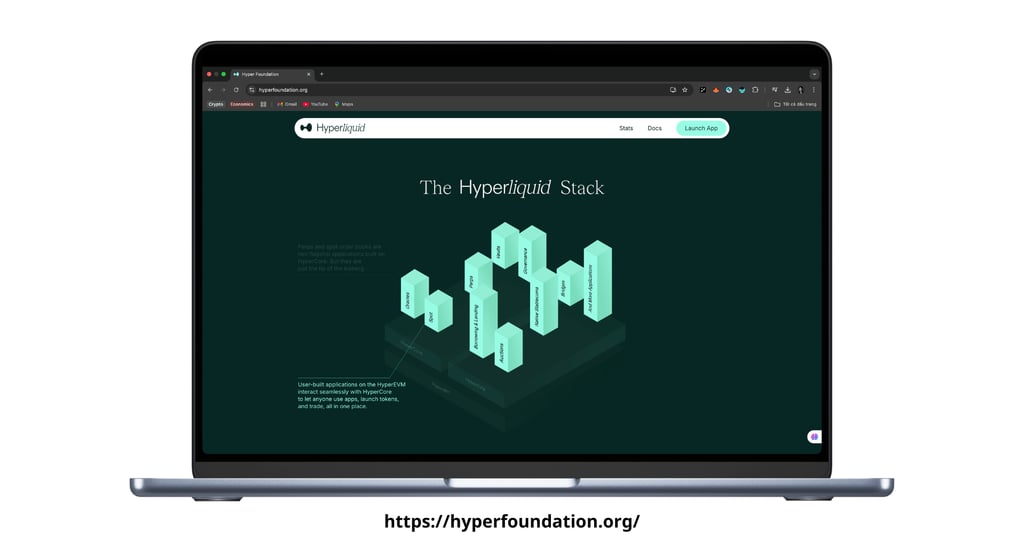

What is Hyperliquid Layer 1 Blockchain?
Hyperliquid is a proprietary Layer 1 (L1) blockchain, optimized for DeFi and perpetual contract trading. Unlike Layer 2 (Arbitrum, Optimism) that rely on Ethereum, Hyperliquid operates its own network, controlling speed, transaction fees, and scalability. Compared to other blockchains (Ethereum, Solana, Arbitrum, dYdX Chain, etc.)
High Performance: 200,000 TPS outperforms Ethereum (~15 TPS) and Solana (~65,000 TPS).
Advantages: High speed, low cost, not dependent on Ethereum.
Limitations: Need to attract more developers and projects to expand the ecosystem.
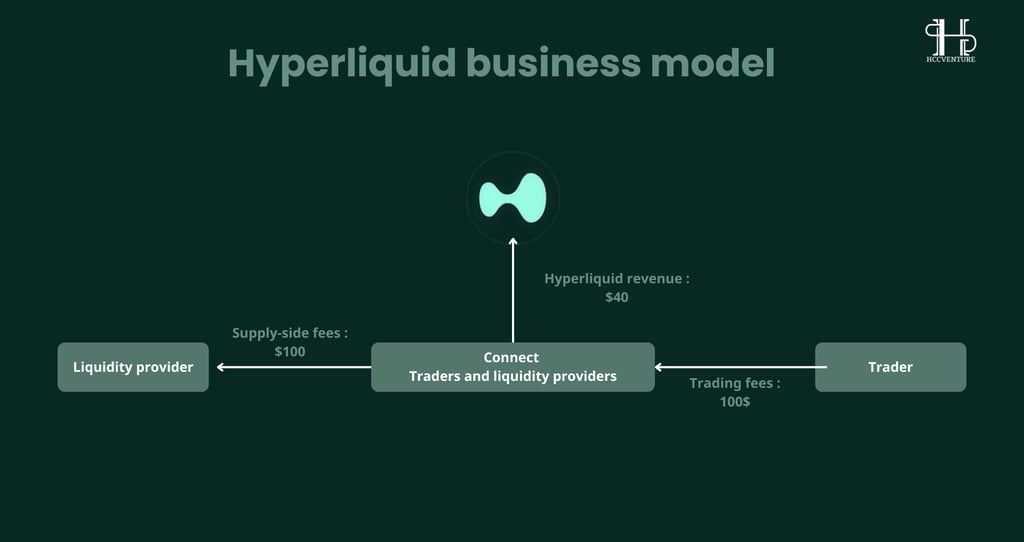

HyperBFT consensus mechanism
HyperBFT is Hyperliquid's custom consensus mechanism, optimized from HotStuff (Libra/Diem) and similar to Tendermint (Cosmos SDK). Compared to traditional Proof-of-Stake (PoS), HyperBFT is faster, more secure, and more scalable.
The consensus protocol is based on Byzantine Fault Tolerance (BFT) , ensuring decentralization, high processing speed, and resistance to errors or fraudulent behavior of some validators in the network.
How Does HyperBFT Work?
HyperBFT is a consensus mechanism that makes blockchain transactions faster, more secure, and more scalable. It works on three main components:
Leader (Proposer): Selects valid transactions and proposes new blocks.
Validators: Check blocks, vote to accept or reject.
Quorum Certificate (QC – Consensus Certificate): If at least 2/3 of validators agree , the block is confirmed and continues.
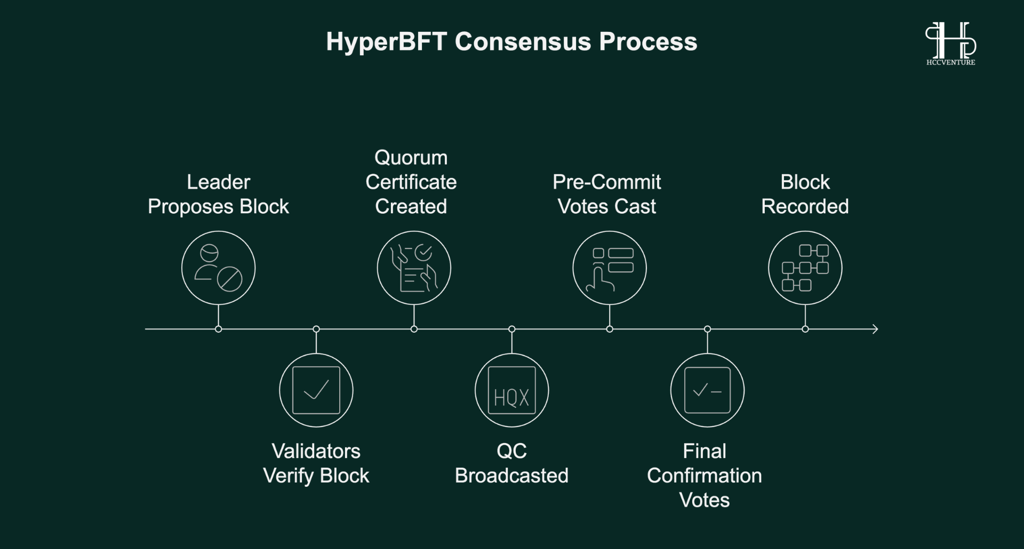

The consensus process takes place in 4 steps:
Prepare: Leader proposes block, Validators check and vote.
Pre-Commit: If 2/3 of the votes are received , the block is marked ready to commit.
Commit: Validators make final commit.
Decide: The block is officially recorded in the blockchain and cannot be changed.
Byzantine Fault Tolerance (BFT) → Ensures safety even if some validators behave badly.
Advantages: Fast transactions, high security, less resource consuming than traditional PoS.
Disadvantage: Need enough honest validators to maintain decentralization.
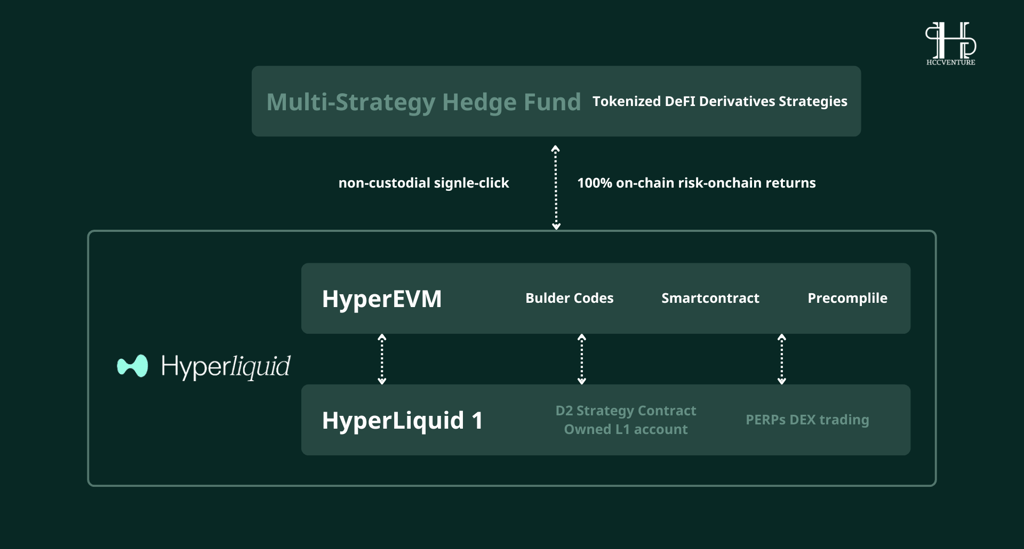

HyperEVM – Ethereum Virtual Machine on Hyperliquid
HyperEVM is an Ethereum Virtual Machine (EVM) -compatible virtual machine environment deployed on the Hyperliquid L1 blockchain . This allows developers to easily build and deploy Ethereum smart contracts on Hyperliquid without making significant code changes. This allows them to leverage the power of the Ethereum ecosystem while benefiting from Hyperliquid's high speed and performance.
Cấu trúc HyperEVM & Dual-block architecture (Fast Blocks vs. Slow Blocks)
Fast Blocks (2 seconds, 2M gas) → Fast transaction processing.
Slow Blocks (1 minute, 30M gas) → Support complex smart contracts.
EVM Bridge & Ethereum Compatibility: Enables secure transfer of assets between Hyperliquid and Ethereum. Base fee & Priority fee burn:
Base Fee Burn → Reduce token inflation.
Priority Fee Burn → Increases HYPE's scarcity.
Trading Mechanism & On-Chain Order Book
Hyperliquid does not use the AMM (Automated Market Maker) model like Uniswap or GMX but applies an on-chain Order Book, similar to CEX exchanges like Binance or dYdX.
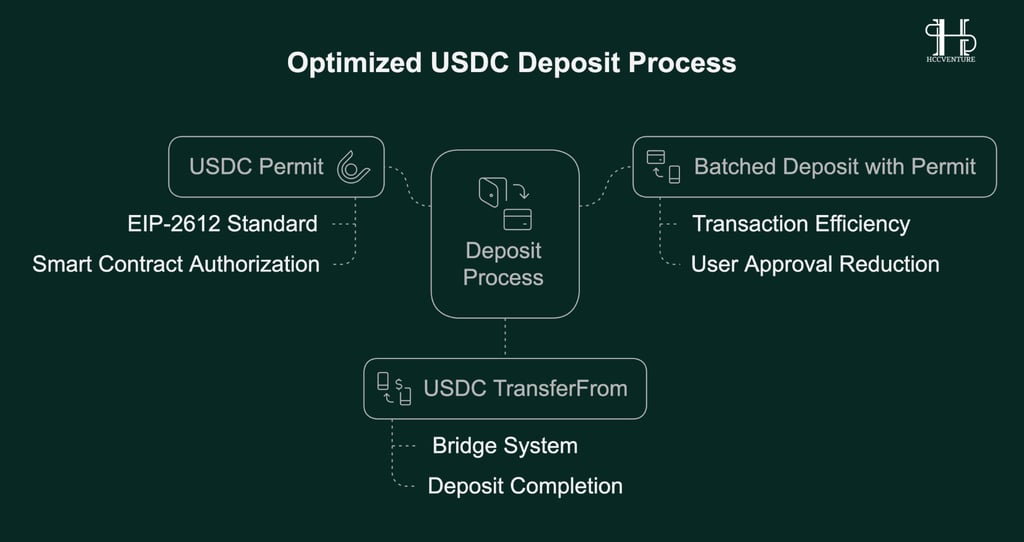

Bridge Deposit Mechanism: Reduce gas fees, increase processing speed and help users deposit more conveniently with fewer operations.
USDC Permission: Users use usdc permit (EIP-2612) to allow nodes to use USDC without manual approval.
Send deposit request: Nodes send batchedDepositWithPermit command to bridge to batch multiple transactions, reducing the number of confirmations.
USDC Transfer: Bridge performs USDC TransferFrom , withdraws USDC from user account and completes deposit.
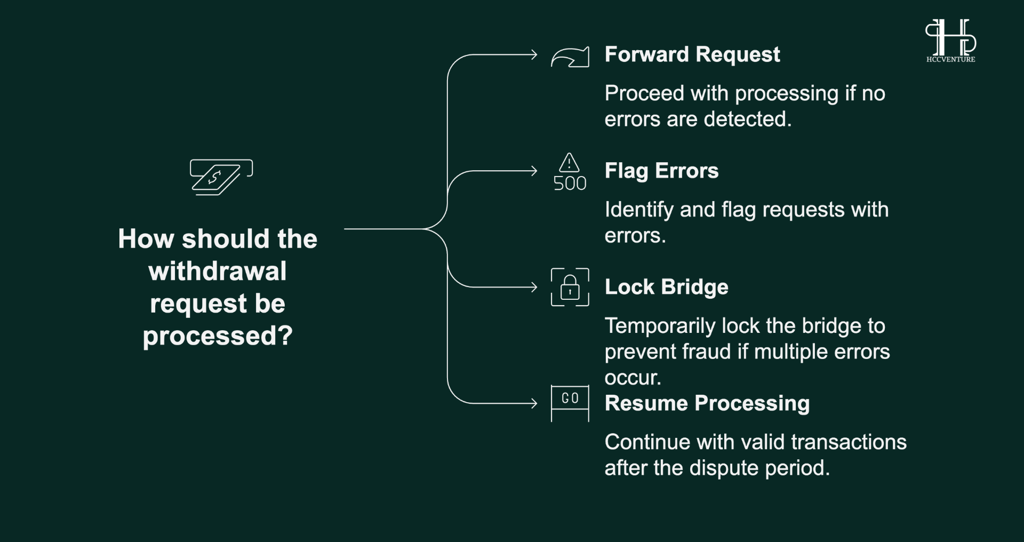

Bridge Withdrawal Mechanism: This system enhances security , prevents fraud and optimizes transaction fees when withdrawing from the bridge.
Submit withdrawal request: User makes withdraw requests to request withdrawal.
Processing via validator: The request is sent to the validator system via batchRequestWithdrawals.
Error checking: If there is an error (insufficient balance, incorrect information), the system marks Invalid withdraw requests and reports an error.
Bridge lock (if necessary): If there are many invalid withdrawal requests, the bridge may be temporarily locked to prevent fraud.
Dispute Period: After a Dispute Period, the bridge continues to process valid transactions.
Withdrawal confirmation: Bridge performs batchedFinalizeWithdrawals , withdrawing in batches to optimize gas fees.
Transaction Complete: User receives funds after the verification process is complete.
Differences with other DEXs (Uniswap AMM vs. Hyperliquid Order Book)
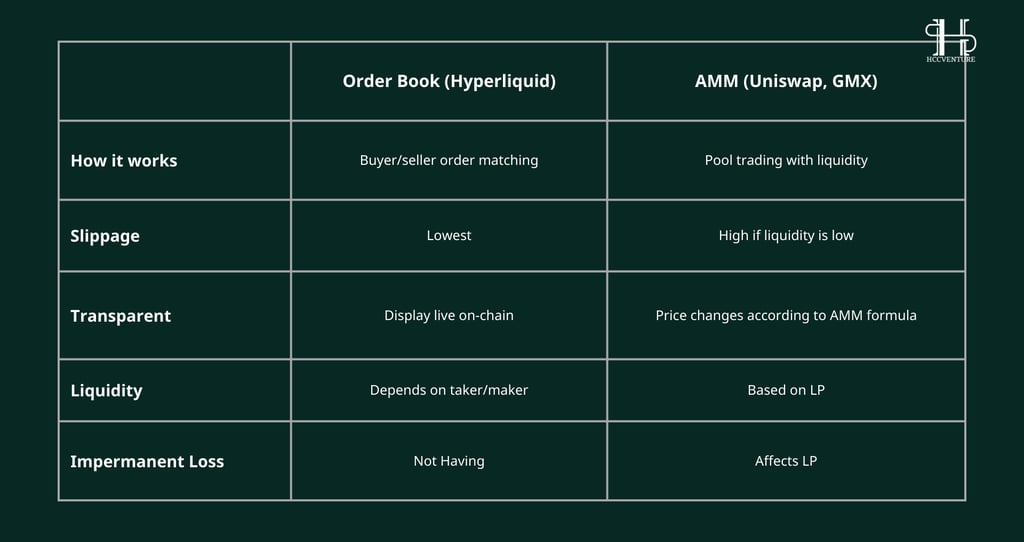

Clearinghouse (Clearinghouse System)
Hyperliquid's Clearinghouse manages balances, margin requirements, and liquidations to ensure fair and efficient trading. The system automatically monitors accounts, maintains minimum margin levels, and triggers liquidations when needed, reducing systemic risk without the need for a middleman.
Tokenomics – The Economic Model of HYPE Token
Contract address: 0x0d01dc56dcaaca66ad901c959b4011ec
Token: HYPE
Giá Hyperliquid (HYPE) : ~$15.00
Market Cap: $5.02B
24h trading volume fluctuates: ~ $144.39M
Total Supply: 1B HYPE
Circulation: ~333.93M
HYPE Token Allocation
Future Release & Community Rewards: 38.888%.
Initial distribution: 31.0%.
Core contribution: 23.8%.
Hyper Foundation Budget: 6.0%.
Community allowance: 0.3%.
HIP-2 Allocation: 0.012%.
Token Unlock Schedule & Market Impact
Currently, only about 333.93 million HYPE (~33.4% of total supply) are in circulation, the rest are locked and expected to be released gradually from 2025-2030.
As the token is unlocked, there may be short-term selling pressure, but if the ecosystem thrives, the demand for HYPE could offset the new supply.
Applications of HYPE Token
Reduced transaction fees: Create incentives for long-term token usage.
Staking & rewards: Staking rewards decrease based on the total amount of HYPE staked, at 2.37%/year when reaching 400 million HYPE.
Governance & Voting: HYPE holders have the right to propose and vote on important protocol changes.
Paying fees on HyperEVM: HYPE is used as gas fee on HyperEVM , similar to ETH on Ethereum.
Deflationary & Value Accumulation Mechanism: A portion of transaction fees are burned , helping to control supply and increase token value in the long term.
Hyperliquid vs. Competitors:
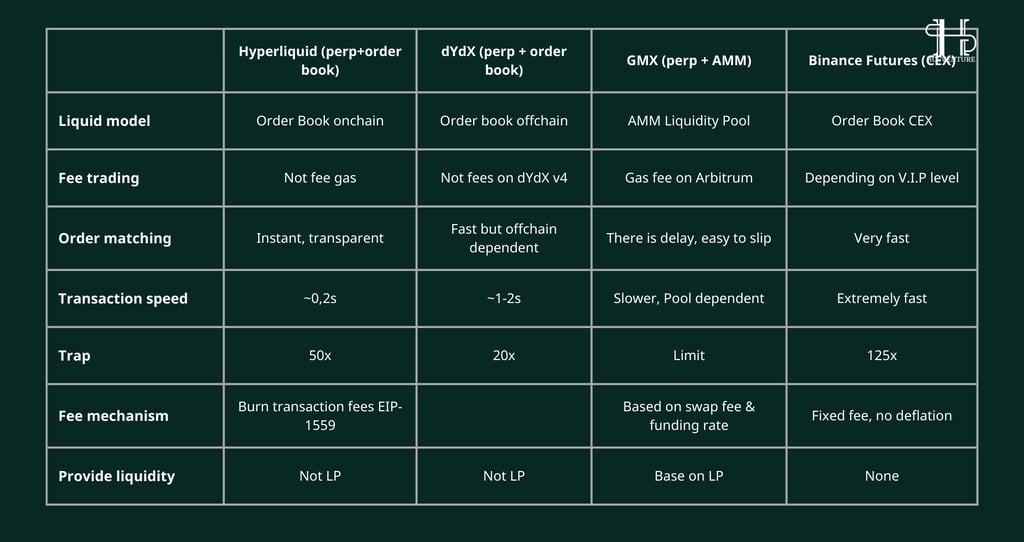

DeFi platforms often rely on Oracles to provide price data, which is vulnerable to manipulation if the Oracle is hacked.
Hyperliquid mitigates this risk by using multiple price data sources and transaction protection mechanisms , which help limit price manipulation on the platform.
Cross-chain bridges are a major target for hackers , with major hacks such as Wormhole ($325M), Ronin ($600M), Harmony ($100M) . Hyperliquid implements the HyperEVM bridge , which allows for interoperability with Ethereum, but still poses risks if the security system is not strong enough.
To mitigate risk, Hyperliquid uses multi-signature and requires validator consensus when processing transactions over the bridge.
Is Hyperliquid a good investment opportunity?
Hyperliquid boasts cutting-edge technology, fast transaction speeds, and an on-chain order book model , which makes it stand out from other DeFi platforms like dYdX and GMX. With a sound tokenomics model , including deflationary mechanisms (burning transaction fees) and staking , HYPE has the potential to increase in price as the ecosystem expands.
In short, Hyperliquid is a potential but new project, investors should monitor the development of the ecosystem, liquidity and applicability of HYPE token before making an investment decision.
Key factors to watch in 2025-2026
Ecosystem growth & application expansion
Impact of token unlock schedule
Technology innovation & cross-chain support
Market developments & legal regulations
Follow HCCVenture to get the latest market information. Once again, we give our opinion on potential projects in the crypto market. This is not investment advice, consider your investment portfolio. Disclaimer: The views expressed in this article are solely those of the author and do not represent the platform in any way. This article is not intended to be a guide to making investment decisions.
Data from: Whitepaper Hyperliquid
Data by HCCVenture
Join our ecosystem: HCCVenture
Explore HCCVenture group
HCCVenture © 2023. All rights reserved.


Connect with us
Popular content
Contact to us
E-mail : holdcoincventure_contact@hccventure.com
Register : https://linktr.ee/holdcoincventure
Disclaimer: The information on this website is for informational purposes only and should not be considered investment advice. We are not responsible for any risks or losses arising from investment decisions based on the content here.


TERMS AND CONDITIONS • CUSTOMER PROTECTION POLICY
ANALYTICAL AND NEWS CONTENT IS COMPILED AND PROVIDED BY EXPERTS IN THE FIELD OF DIGITAL FINANCE AND BLOCKCHAIN BELONGING TO HCCVENTURE ORGANIZATION, INCLUDING OWNERSHIP OF THE CONTENT.
RESPONSIBLE FOR MANAGING ALL CONTENT AND ANALYSIS: HCCVENTURE FOUNDER - TRUONG MINH HUY
Read warnings about scams and phishing emails — REPORT A PROBLEM WITH OUR SITE.
